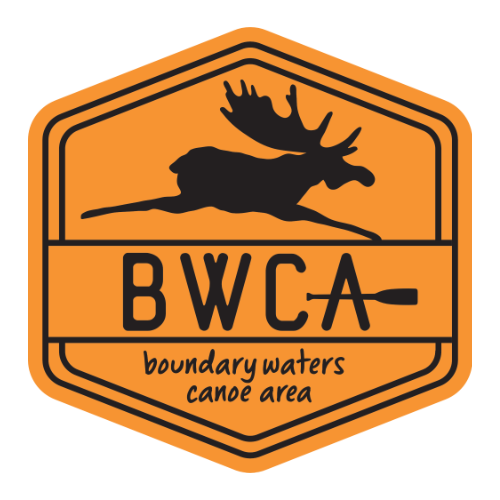Sioux-Hustler Hike
by takk
The Sioux-Hustler trail (in my subjective opinion) is in great shape for a BWCA backpacking trail, but probably compares poorly with more heavily trafficked trails in other parts of the country. In general the treadway is easy to visually see and is generally clear of brush so that you can see your footing without issue. Some of the trails are routed along old logging roads and two-track jeep trails. The logging roads are wide, flat, still have culverts and are ditched on either side. I don't think these extend past the first mile or two of the trail, the logging roads appear to have been mostly winter use and preferred the wetland areas. You can still see many of them on aerial imagery as they cross the wetland aroudn Woksapiwi Lake. The two-track sections I think lead to the old Cascade Lookout Tower that is above Devil's Cascade. These stood out to me because they have quite a bit of rockwork that seems out of place on a BWCA trail. Whichever type of road you might be on, they're both heavily overgrown and barely recognizable at this point unless you're actively looking. I didn't see any, but there are photos from the last 10 years that show people finding sections of telephone line along the trail that used to connect the lookout to Ely. Much of the rest of the trail is footpath, and again, the treadway was in pretty decent shape.
There are some trees down across the trail, but generally these are single trees and do not pose a hazard for climbing over, under, or bypassing to either side. Many are relatively large including one downed pine that must be 24" in diameter minimum. The trees that are hazardous to bypass are on the western section of the trail between Devil's Cascade and Pageant Lake, particularly within the first or second mile of Devil's Cascade. Terrain here is steeply sloped to the Little Indian Sioux River and you more or less have to crawl. All told, I think there was only around two dozen downed trees.
There are only two parts of the trail that posed navigation problems. These were in meadows next to, or in among old beaver dams. Navigation is a challenge because alternate tracks in underbrush may mislead an unwary hiker, taking them away from the true route that may be obscured by vegetation. The first is located about 4-5 miles north of the trailhead, where the trail makes a sharp right turn from generally NW to NE if walking North. Trampled vegetation seems to lead towards the Pauness Lakes. The second is in a meadow/beaver pond (it was amost entirely dry when I encountered it) between Shohola Lake and Emerald Lake, near where the trail makes a sharp turn from generally E to N if walking the trail counter-clockwise. The trail exits a treeline near a beaver dam and crosses a short grassy area and some water channels. Where the trail reenters the trees was heavily obscured for me, but trampled vegetation led NW up into the larger meadow/beaver pond area. Several areas of the trail have been flagged with different colors. There is blue plastic flagging marking the trail pathway through an aspen stand that has been felled by a very industrious beaver (I think this was on State land outside the wilderness). There is orange duct tape flagging on trees that can sometimes be seen at those problematic navigation areas, though I only ever saw one flagged tree at each area.
There are few navigational markers on this trail at this time. Bringing paper and digital maps is recommended. Be aware of your digital maps, not all of them mark the backpacking campsites on the Sioux-Hustler consistently. I did not see spur trails leading to most of the canoe sites located along the trail.
I achieved the solitude that I was looking for. I saw no other backpackers or canoeists during my hike. I saw one group of day-hikers who were on their way to Devil's Cascade, but they changed their plans once I shared my map with them (it was mid-afternoon, and they were 4-5 miles away from the waterfall). Instead they said they'd hike to the little Elm Portage rapid which was flowing pretty nicely.
Bugs weren't terrible. I saw one wood tick, but wore no deet. I needed a bug net at the trailhead, and that was about it. The trail itself was mostly dry and even the typically muddy places were relatively dry. You'll still get wet feet at streams and beaver dams. Test water depth before stepping into dark water, some narrow channels seemed to be more than 3' deep.

 Donate - BWCA.com
Donate - BWCA.com